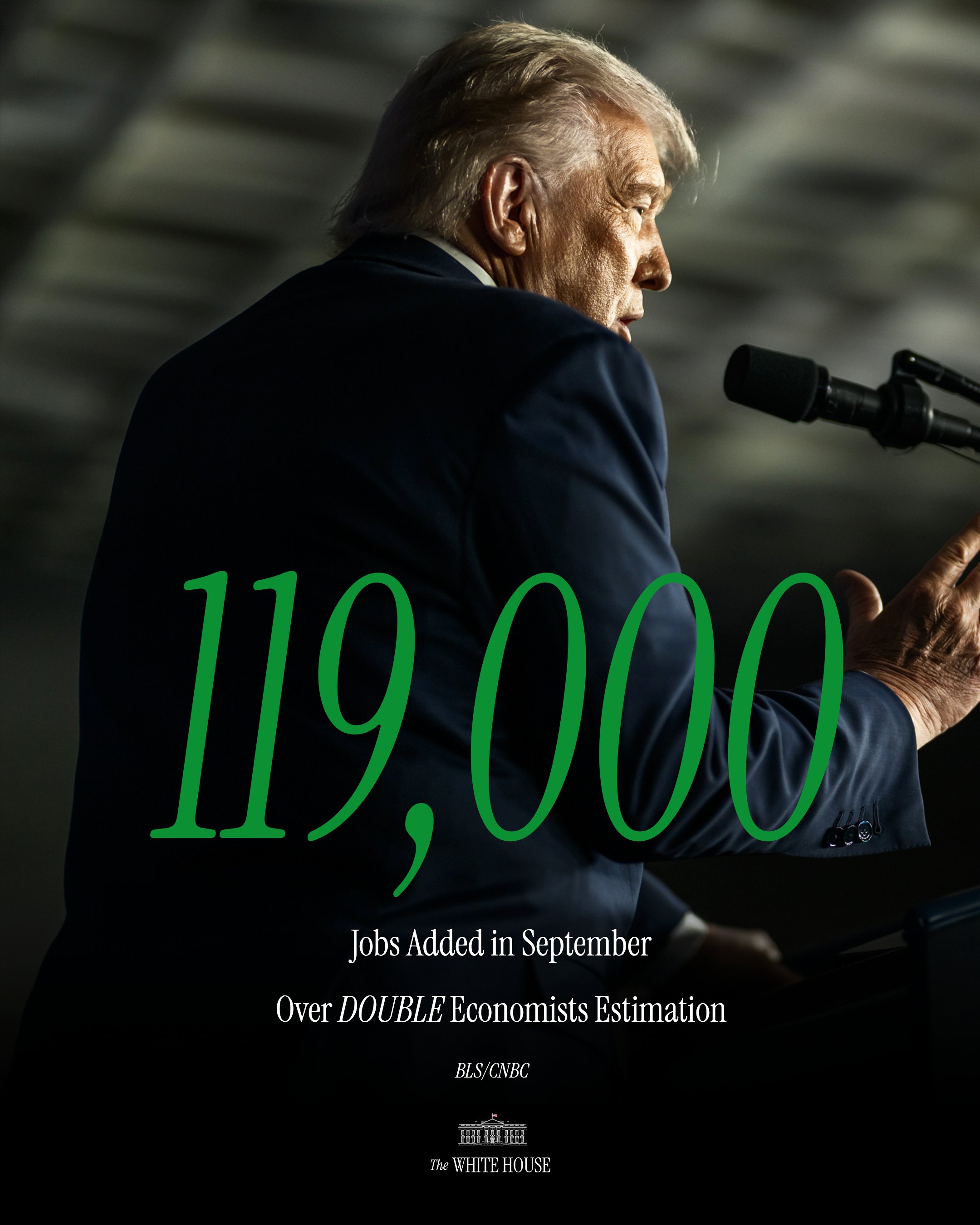Is there an agenda behind the September jobs data from the Trump administration?
A very strong realization hit me the moment I read today’s delayed September jobs report, which showed 119,000 new jobs even though August posted losses and July was revised down.
Now as you know, this report was supposed to come out on October 3, but the seven‑week delay blamed on the government shutdown made the timing look way too convenient.
We are in a moment where earnings from major US companies show people spending less, businesses tightening up, and the whole economy slowing. Yet suddenly the Trump White House rolled out a report it claimed proved “great progress.”
The White House pushed a full message around this report. Press Secretary Karoline Leavitt, who later insisted it was all “strong progress,” said the September number “more than doubled market expectations.” She also said the gains were almost all private‑sector jobs and “went to American-born workers instead of illegal aliens.”

Then she claimed wages were rising after falling under Biden, calling it proof that Donald Trump’s policy approach was working.
After that, the White House posted photos of Trump smiling with victory energy on social media, suggesting he had somehow pulled off a near‑impossible economic turnaround in the middle of weak spending, weak labor conditions, and fading corporate confidence.
Karoline doubled down again later, saying the new data was “another step in the right direction” as Donald worked to reverse what she described as the Biden‑era inflation stretch.
Connect unemployment to Fed pressure
The part that made markets move wasn’t the headline number, though. It was the unemployment rate. It climbed to 4.4%, the highest in four years. Traders instantly treated this “bad” news as “good” news because a higher unemployment rate corners the Fed.
Rate cuts start looking more realistic. That jump came even as the stock market stayed close to record levels.
The AI boom is still running fast, and the Magnificent 7 are sitting above $20 trillion in combined value. But everyday Americans feel the opposite. Over 60% believe the country is in a recession.
Buying anything feels harder. The labor market feels thin. And the wealth divide keeps widening between people who own crypto, stocks, and property and people who do not.
This is why the conversation shifted quickly. If rate cuts arrive, Wall Street will rise even higher. Main Street will still struggle. And the White House knows Fed chair Jay Powell pays more attention to the unemployment rate than the headline job number.
Powell said this many times. He also said immigration limits are now bending the job figures, making the headline less meaningful.
If the labor pool is shrinking because immigration crackdowns reduce available workers, unemployment should fall. Instead, it rose.
Push rate‑cut odds with delayed data
After the delayed release, market pricing for a December rate cut surged to 35%, up from 30% just yesterday on the CME FedWatch Tool.
The target rate is stuck between 3.75% and 4.00%. Some investors said the unemployment jump keeps December alive because the number is watched more than the headline count. They also warned that rising unemployment with a shrinking labor pool makes the situation more troubling.
The political backdrop matters. Donald has been publicly attacking Powell for over a year, saying the Fed is hurting the economy. If Powell uses unemployment as his guiding metric, and the White House knows that, then releasing a delayed report that boosts the unemployment pressure right before key policy discussions is a power play worth my attention.
Whether it was deliberate or not, the pattern is pretty hard to ignore, Mr. President.



